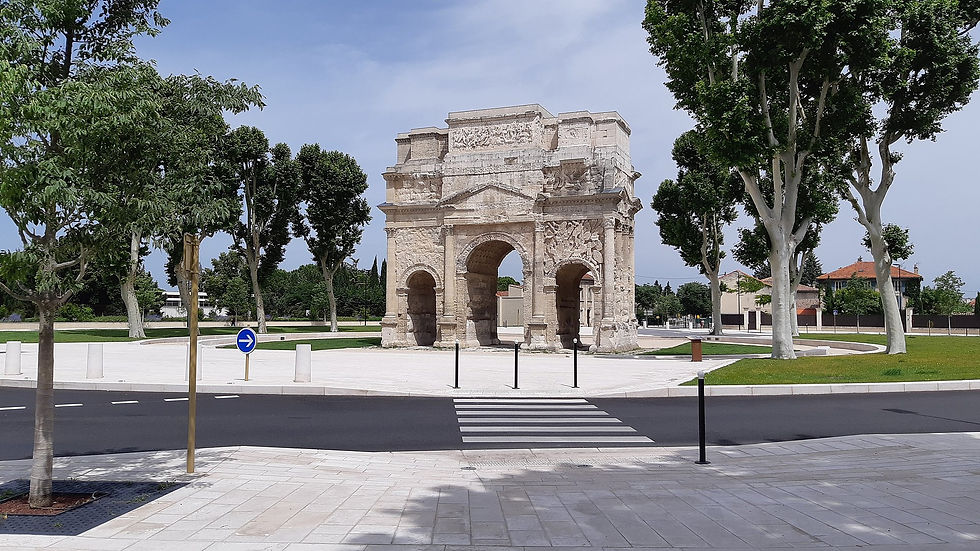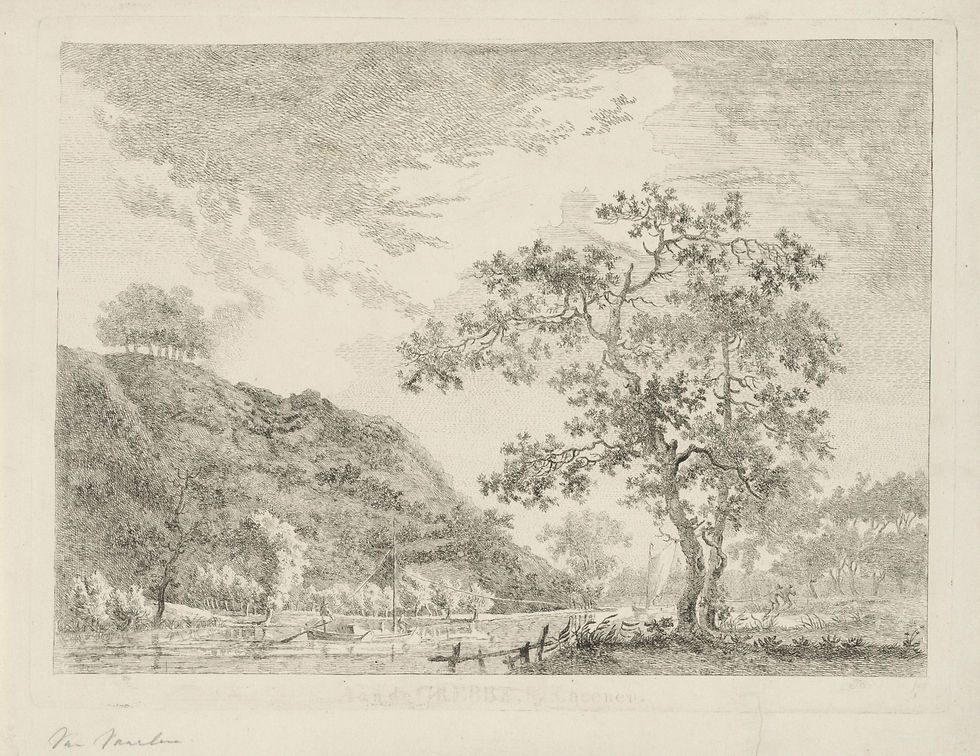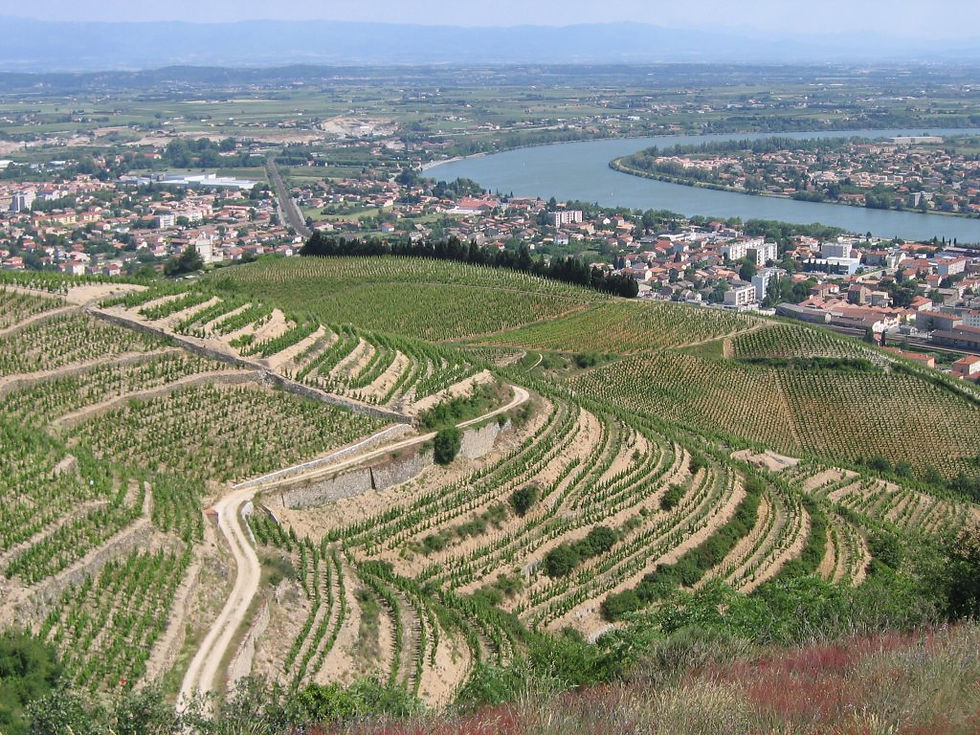TJ’S SUBLIME SIX
- derekjbaxter
- Mar 23, 2023
- 4 min read
Jefferson praised many places he came upon during his world travels. But he only ever deemed six to be “sublime”—that is to say, of such grandeur that they inspired awe that could not be measured. "The rapture of the spectator is indescribable!” he gushed about one of them. But, undaunted, he took a crack at describing them anyways. Below are his reactions.
I’ve had the good fortune to visit five of them myself, just missing the site of the sixth. Here are my own ratings, on a jaw-dropping scale of one (jaw remains firmly in place) to four (jaw on the ground).

PONT DU GARD
Rating: 4

Jefferson marveled at this 150-foot-tall aqueduct in the south of France, which showed off “Roman taste, genius, and magnificence.” The Pont du Gard was both graceful, with three tiers of arches rising above the plains of olive trees, and practical, bringing water over 30 miles to a Roman town that needed it, “a sublime antiquity [well] preserved,” he wrote, even though “wild figs, very flourishing” were growing out of the structure’s masonry joints.
If you go in summer, bring a swimsuit and cool off in the water below it. And then order a glass of Costières de Nimes and a plate of saucissons in the small café overlooking the aqueduct and contemplate the passage of time.
NATURAL BRIDGE
Rating: 3

In his only book, TJ described Natural Bridge—a 215-foot limestone arch that formed over Cedar Creek in western Virginia—as “the most sublime of Nature’s works.” He first visited it as a young man later and bought it for himself.
“Few men have resolution” to walk across the bridge, he wrote. Instead, most visitors fell on their hands and knees and creep to the edge, hesitantly looking down. Even doing that gave him a headache. But the view from below more than made up
for it—from the creek, Jefferson gazed up rapturously at “so beautiful an arch, so elevated, so light, and springing as it were up to heaven.”
Today, you walk down a steep path from a museum, turn a corner, and are suddenly face-to-face with the arch, as stunning as you expected. And your courage won’t be tested as in Jefferson’s day—they don’t let anyone creep along on top of it anymore.
THE ARCH AT ORANGE
Rating: 2

Jefferson viewed this ceremonial arch, erected during the time of Augustus to commemorate a Roman victory, with “rapture.” But today there’s only one problem: they’re in the middle of a traffic circle. French planners bizarrely decided to route the N7 on either side of this architectural treasure.
Which makes the experience underwhelming. It’s not so easy to conjure up the glory of ancient Rome when Citroens are whizzing past you. Take a quick peek and move on to the real sublime spot in Orange, its massive Roman theater, one of the few in the world with the back wall behind the stage still standing upright.
VIEW FROM A RANDOM HILL IN THE NETHERLANDS
Rating: N/A

After leisurely drifting down on a riverboat from Amsterdam to Utrecht—passing turnip farms and grazing sheep along the way—Jefferson disembarked and climbed the 150-foot hill of Grebbeberg, today near the Dutch-German border. He pronounced the view over the Waal River “sublime.” Maybe he was just stunned that the Dutch had a hill at all.
We made it to Utrecht but not, sadly, to Jefferson’s hill. Since then, TJ’s words in Hints to Americans have stung. “When you are doubting whether a thing is worth the trouble of going to see,” it reminds us, “recollect that you will never again be so near it, that you may repent the not having seen it, but can never repent having seen it.”
Have you been? Was it in fact sublime? If so, please let me know, this repenting is killing me.
HERMITAGE
Rating: 3

Of course, Jefferson loved ascending to the top of the sun-soaked hill in Tains l’Hermitage in southeastern France to reach the hermitage at the top. Below he could not only see the Rhone river slowly flowing, but acres upon acres of “justly celebrated” winegrapes. That was one lucky hermit.
The slopes of Hermitage were, some said, the spiritual homeland of the Syrah grape, which makes powerful reds.
The iconoclastic Jefferson preferred white Hermitage, which he found to be silky, luscious, and sweet, considering it “the first wine in the world without a single exception.” Today, you can tour a winery or two at the base of Hermitage and climb to the top for the view. Or, if you plan things better than I did, hike first, drink later.
MONTICELLO
Rating: 4

In the end, one of the most sublime spots Jefferson ever saw was close to home: his own. He chose to place his house on top of an 850-foot mountain with views of peaks stretching to the horizon. “How sublime to look down into the workhouse of nature,” he wrote, “to see her clouds, hail, snow, rain, thunder, all fabricated at our feet!” And when the bad weather passes, the sun rises, “just gilding the tops of the mountains, and giving life to all nature!”
Monticello is stunning for more than just the views: the elegant Palladian house, the thousand-foot-long experimental garden below it, and the landscaping.
Yet it also inspires thought—not just for Jefferson’s genius, but for the work done by the enslaved people to create this place. Enslaved workers leveled the mountain, tended the garden, and helped build the mansion, adding their own artistic touches along the way. Some searched for a path to freedom off the mountain.
Of all these sites that I’ve visited, Monticello, then, remains my favorite, for it tells one of the most grand, painful, and yet inspiring stories I’ve heard. Which happens to be our own.



Comments